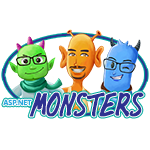Entity Framework dives many of today’s most popular applications. Using EF with PostgreSQL is a snap! Checkout how in this video.
In this video we’ll start looking at how to use the PostgreSQL database from C#. We’ve previously looked a bit at PostgreSQL on azure and you can watch that here: https://www.aspnetmonsters.com/2022/09/monsters-weekly%5Cep260/
Ever wanted to hide a file in git but don’t want to make it global by adding it to the .gitignore? Simon has you covered!
Speed up your Azure DevOps Pipelines! By combining Shallow Fetch and turning off the Sync Tags option you can dramatically decrease the amount of time it takes to fetch your git repo.
SQL server isn’t the only database available on Azure. We can also use a really nice managed instance of postgresql.
If you want your node/npm based project to use a specific version of Node and NPM, it’s best to enforce that using the engines setting in package.json. In today’s episode, we do just that with the ASP.NET Monsters blog repo and even configure GitHub Actions to install the correct version onf Node based on the engines specified in package.json.
Changes we made to package.json and our GitHub Actions Workflow:
https://github.com/AspNetMonsters/website/pull/92/files
Volta for integrating with your shell https://volta.sh/
Taking the next step from our last video we incorporate Razor into building PDFs
In this video we’ll look at how to generate PDFs from inside a functions app using https://github.com/HakanL/WkHtmlToPdf-DotNet
The new IEnumerable Debugger Visualizer in Visual Studio makes it easy to display (and even export) large collections when debugging your code.
Check out these tips for making it easier to visualize collections (arrays, lists, etc.) in the Visual Studio Debugger.
DebuggerDisplay Attribute - https://docs.microsoft.com/en-us/visualstudio/debugger/using-the-debuggerdisplay-attribute?view=vs-2022
